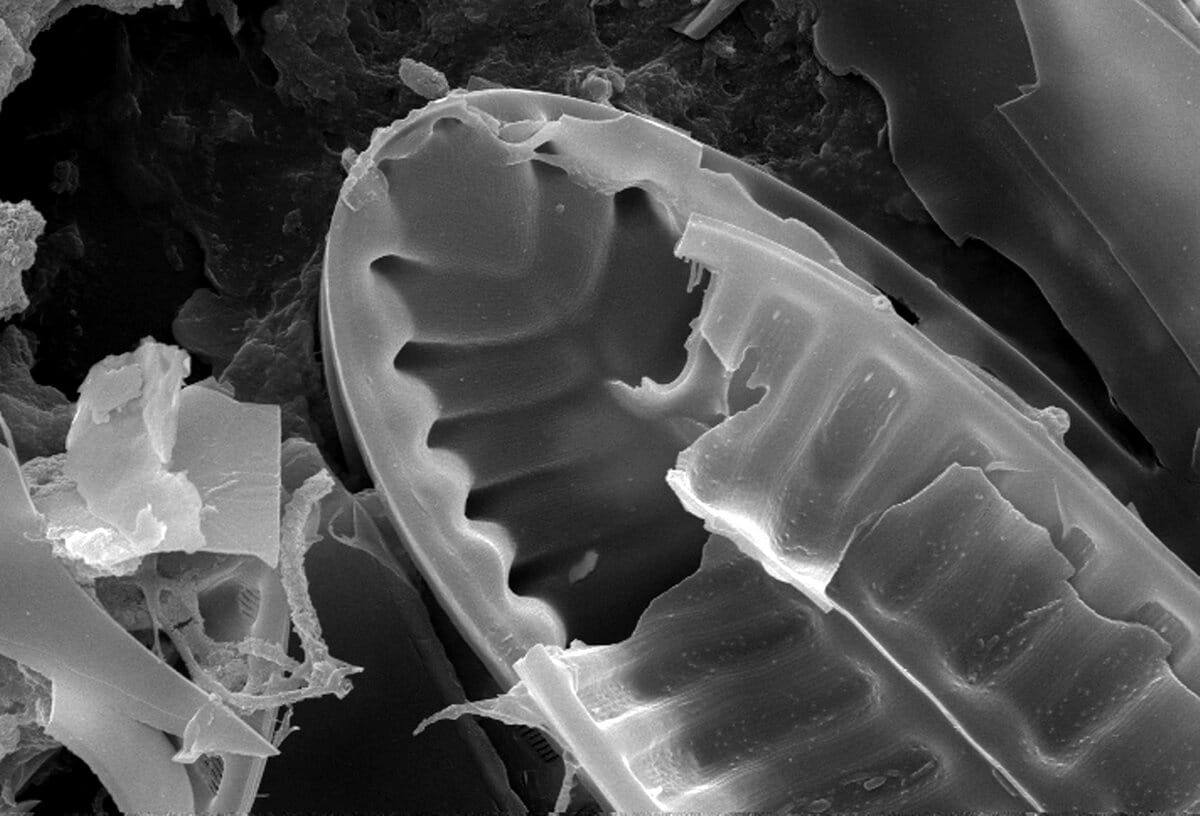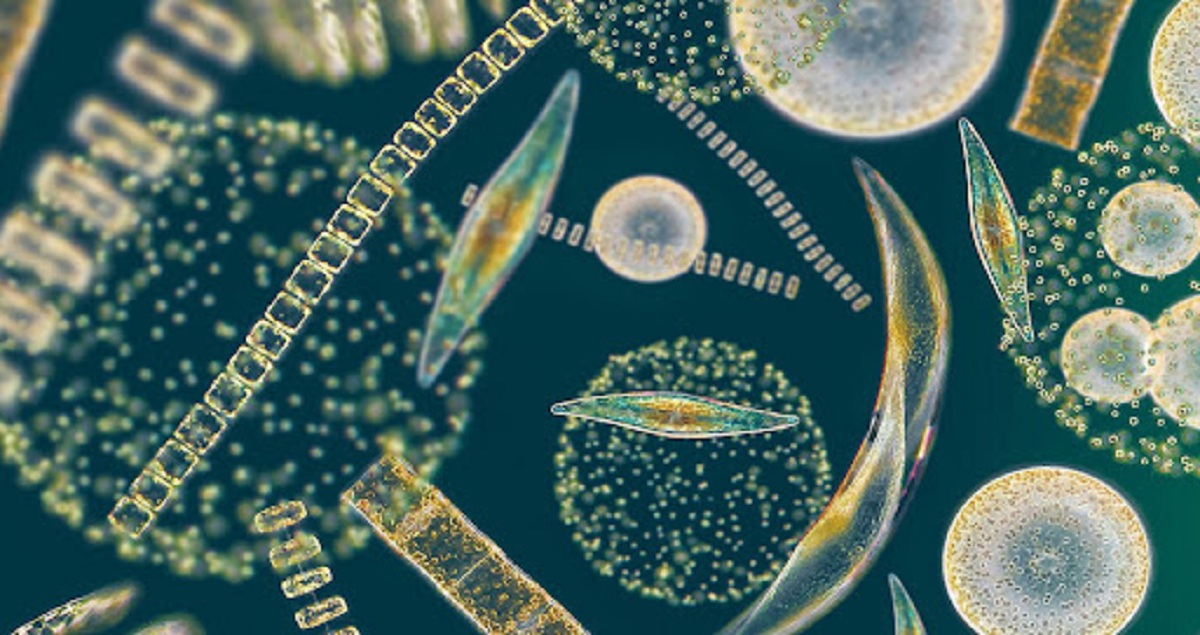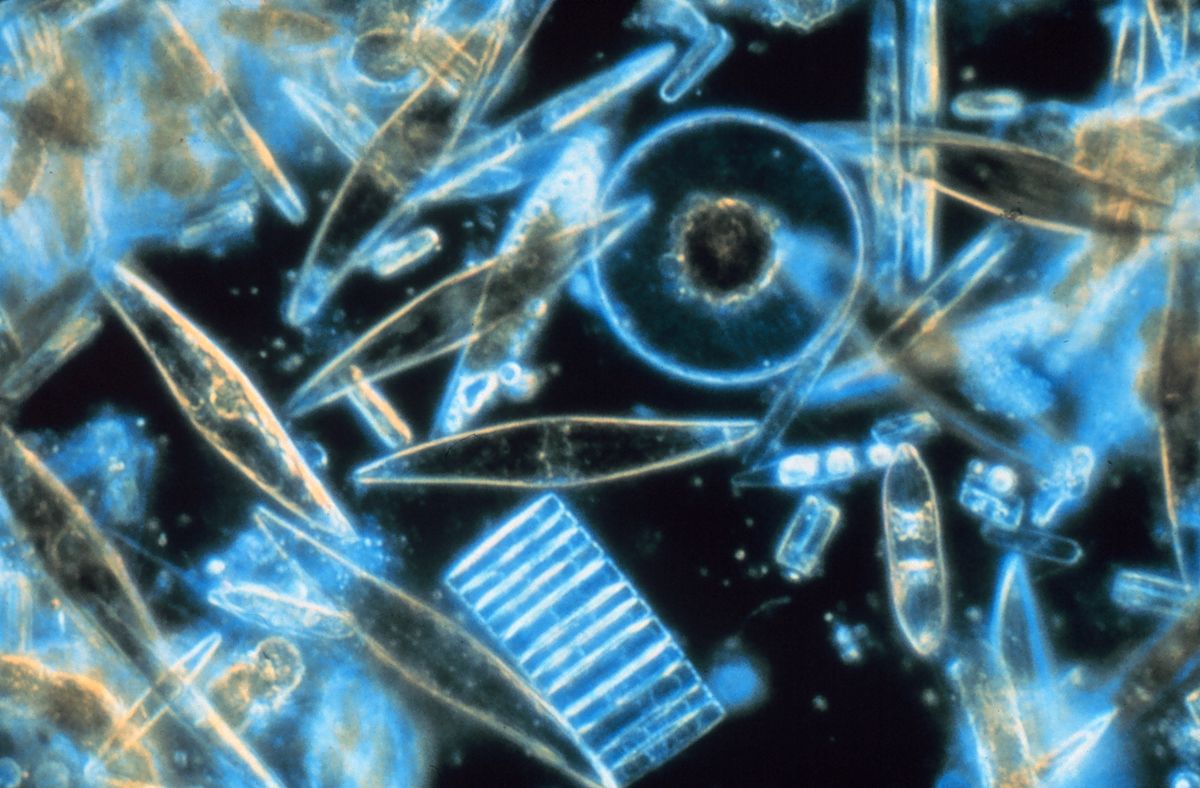
Within the group of algae we have microalgae that are aquatic and unicellular. Among these we have the diatoms. They can be of the plantonic type, that is to say, have a free life or form colonies. Diatoms are characterized by having a cosmopolitan distribution, so we can find them all over the planet.
In this article we are going to tell you everything you need to know about diatoms, their characteristics and importance.
Key features
Together with other groups of microalgae, they are part of a large number of phytoplankton outcrops in tropical, subtropical, Arctic and Antarctic waters. Their origin dates back to the Jurassic period, and today they represent one of the largest groups of microalgae known to mankind, with more than 100.000 species described between extinction and extinction.
Ecologically, they are an important part of the food web of many biological systems. Diatom sediments are a very important source of organic matter that accumulates on the seabed.
After a long process of deposition, pressure of organic matter and millions of years, these sediments have become the oil that drives the development of our current civilization. In ancient times, the ocean covered the present-day regions of the earth. Some of these areas still have deposits of diatomaceous earth, called diatomaceous earth.
They are eukaryotic and photosynthetic organisms with a diploid cell stage. All species of these microalgae they are unicellular and have a free form of life. In some cases, they will form (spherical) colonies, long chains, sectors, and spirals.
The basic characteristic of diatoms is that they have a diatom shell. Diatom frustules are a type of cell wall composed mainly of silicon dioxide, which surrounds cells in a structure similar to a Petri dish or a Petri dish. The upper part of this capsule is called the epithelium and the lower part is called the mortgage. The decoration of the shell varies from one type to another.
Diatom nutrition
Diatoms are photosynthetic organisms: they use light (solar energy) to convert them into organic compounds. These organic compounds are necessary to meet your biological and metabolic needs.
To synthesize these organic compounds, diatoms need nutrientsThese nutrients are mainly nitrogen, phosphorus and silicon. The last element serves as a limiting nutrient because it is necessary for the formation of diatom frustules.
For the photosynthesis process, these microorganisms use pigments such as chlorophyll and carotenoids.
Chlorophyll
Chlorophyll is a green photosynthetic pigment located in the chloroplast. Only two types are known in diatoms: chlorophyll a (Chl a) and chlorophyll c (Chl c). Chl participates mainly in the photosynthesis process; on the contrary, Chl c is an accessory pigment. The most common Chl c in diatoms are c1 and c2.
Carotenoids.
Carotenoids are a group of pigments belonging to the isoprenoid family. In diatoms, at least seven types of carotene have been identified. Like chlorophyll, these help diatoms to capture light and convert it into organic food compounds for cells.
Reproduction in diatoms

Diatoms reproduce asexually and sexually through the processes of mitosis and meiosis, respectively.
Asexual
Each stem cell undergoes the process of mitosis. The products of mitosis, genetic material, nucleus, and cytoplasm replicate to produce two daughter cells identical to the parent cell.
Each newly created cell takes a leaflet from the stem cell as its epithelium and then establishes or forms its own collateral. This breeding process can occur 1 to 8 times in 24 hours, depending on the species.
Since each daughter cell will form a new mortgage, the daughter cell that inherits the home loan from the parent cell will be smaller than its sister cell. As the mitosis process repeats, the number of daughter cells is gradually reduced to a sustainable minimum.
Sexual
Cell sexual reproduction involves the division of diploid cells (with two sets of chromosomes) into haploid cells. Haploid cells carry half of the genetic makeup of the stem cell. Once the vegetative diatom reaches its minimum size, sexual reproduction begins before meiosis. This meiosis produces haploids and naked or knotless gametes; gametes fuse to form spores called helper spores.
The auxiliary spores allow the diatom to restore the maximum size of the diploid and the species. They also allow diatoms to survive in harsh environmental conditions. These spores are very hardy and will only grow and form their respective shells when conditions are favorable.
Ecology and flowering
The cell walls of diatoms are rich in silica, commonly known as silica. Therefore, its growth is limited by the availability of this compound in its growing environment.
As mentioned earlier, the distribution of these microalgae is worldwide. They exist in fresh and ocean water bodies, even in environments where the amount of available water is low or there is a certain degree of humidity.
In bodies of water, they mainly inhabit the pelagic zone (open waters), and some species form communities and inhabit benthic substrates. The size of diatom populations is generally not fixed: their number varies greatly with certain periods. This periodicity is related to the availability of nutrients and also depends on other physical and chemical factors such as pH, salinity, wind and light.
When the conditions are the most suitable for the development and growth of diatoms, a phenomenon called blooming or blooming occurs.
During upwelling, diatom populations can dominate the phytoplankton community structure and some species participate in harmful algal blooms or red tides.
Diatoms can produce harmful substances, including domoic acid. These toxins will accumulate in the food chain and eventually affect humans. Human poisoning can cause fainting and memory problems, and even coma or even death. It is believed that there are more than 100.000 species of diatoms between the surviving (more than 20.000 species) and extinction (some authors believe that there are more than 200.000 species). Its population contributes approximately 45% of primary marine products.
I hope that with this information you can learn more about diatom works and their characteristics.

